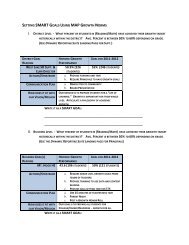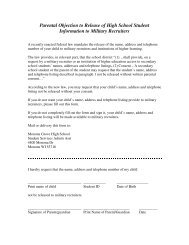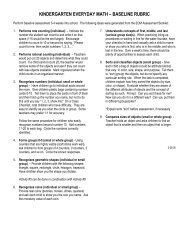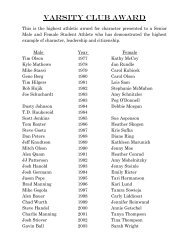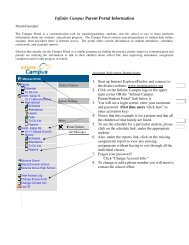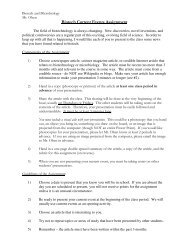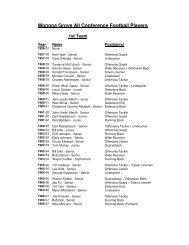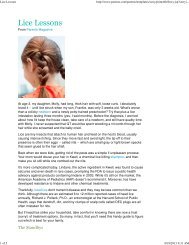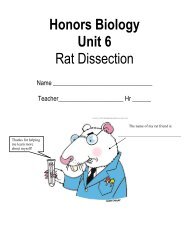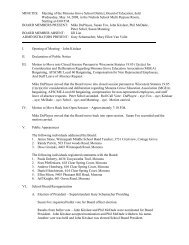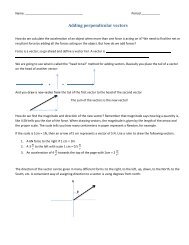Packet for Cu lab, naming and writing formulas, reaction types and ...
Packet for Cu lab, naming and writing formulas, reaction types and ...
Packet for Cu lab, naming and writing formulas, reaction types and ...
Create successful ePaper yourself
Turn your PDF publications into a flip-book with our unique Google optimized e-Paper software.
6. Describe how to use gravity filtration <strong>and</strong> explain why you used this technique.<br />
______________________________________________________________________________________________________<br />
_____________________________________________________________________________________________________<br />
7. For the following, write the <strong>for</strong>mula of the substance indicated:<br />
a. Sulfur difluoride<br />
b. Sodium hydroxide<br />
c. Bromine gas<br />
d. Barium acetate<br />
e. Iron (III) phosphate<br />
f. Calcium iodide<br />
g. Cobalt (II) chloride<br />
h. Hydrogen peroxide<br />
8. For the following, write the name of the substance indicated:<br />
a. <strong>Cu</strong>OH<br />
b. (NH 4)(NO 3)<br />
c. CCl 4<br />
d. CaI 2<br />
e. Pb<br />
f. Fe 2O 3<br />
g. SeBr 2<br />
h. K 3(PO 4)<br />
9. Write the chemical <strong>for</strong>mula <strong>for</strong> the <strong>reaction</strong> described below.<br />
a. Circle the reactants <strong>and</strong> square the products:<br />
b. Use the symbols (s), (l), (g) <strong>and</strong> (aq)<br />
Hydrochloric acid is diluted with water <strong>and</strong> then added to a precipitate of copper II oxide. The product was copper (II) chloride<br />
solution.



